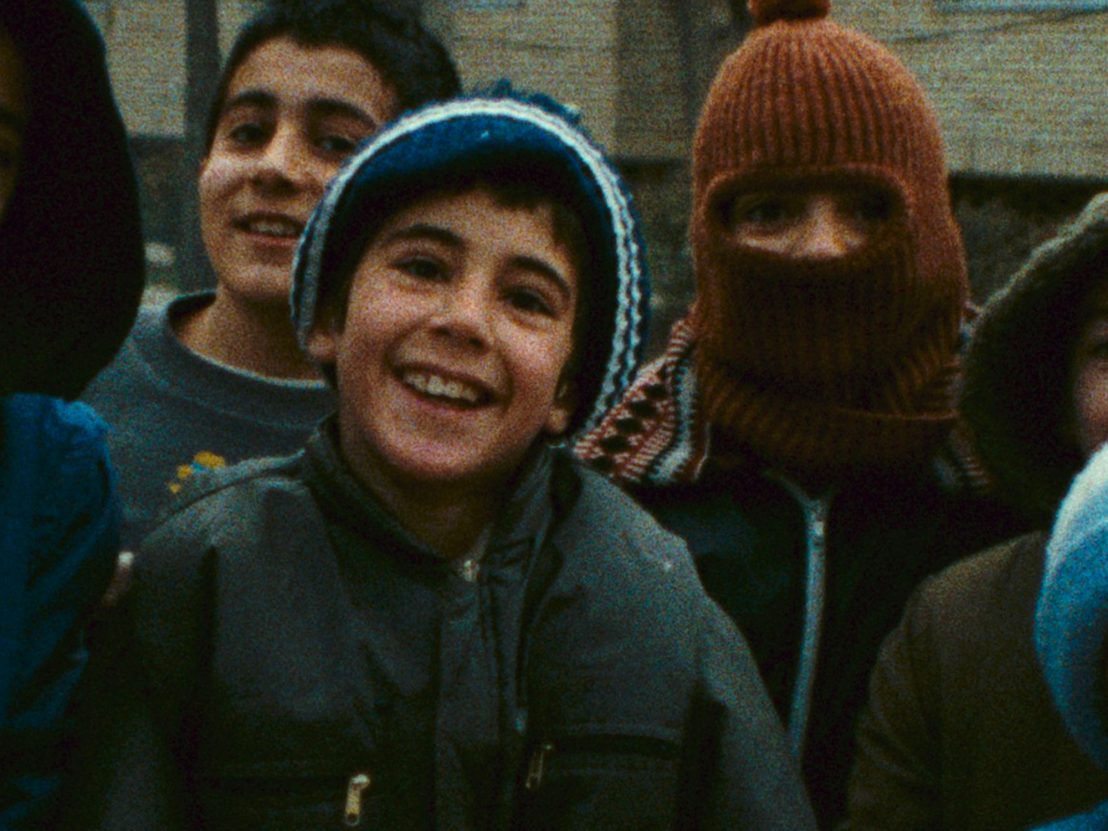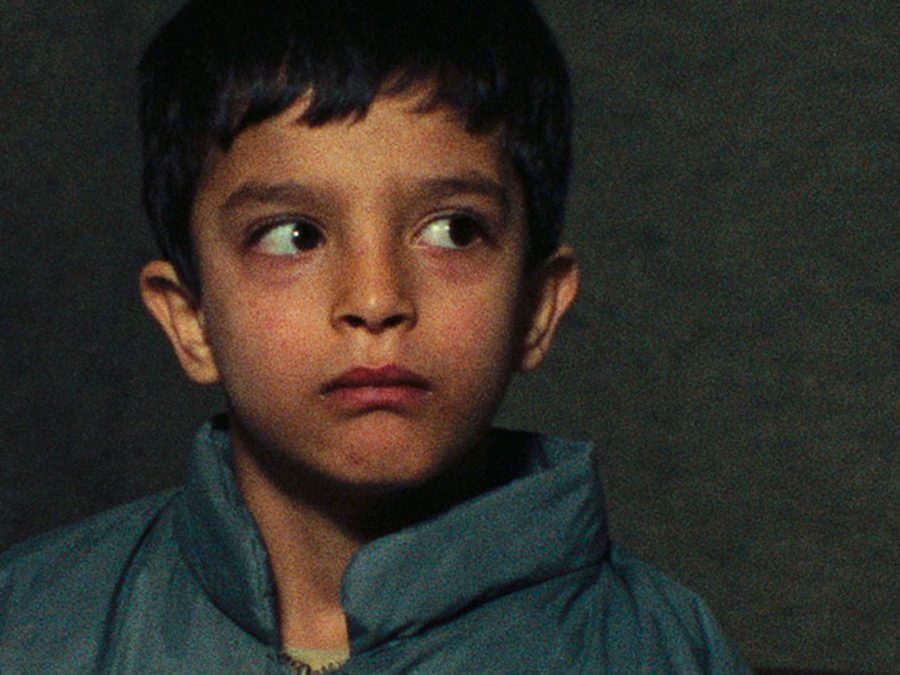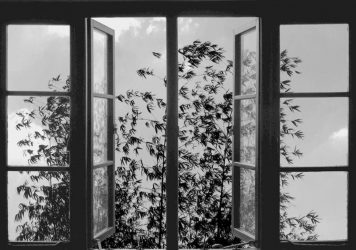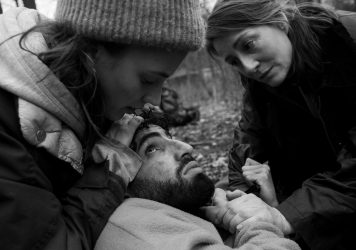
Through my limited exploration of the Iranian New Wave, I’ve found a genuineness comparable to poetry. I often write my own poems, and I find that these come from the very deepest, strongest eruptions of ‘experience’. Poetry writes differently to prose, in that every word feels like it must fit right where it is, and any change in comma or full stop will ruin the hyperbolic replication of said ‘experience’. To me, poetry is not so much a story with a lesson, but rather a display of what it truly means to feel.
A connection between poetry and Homework feels almost imperative to make, sprouting from Abbas Kiarostami’s own confusion on how the film must exist. What does it portray, and how does it portray it? In the first few minutes of the film, Kiarostami is asked whether Homework would be a fiction film, to which he replies, “I don’t know,” stopping himself from declaring it a documentary. What restricts this declaration?
Kiarostami’s discussion with the children of Shahid Masumi school about their own relationship with homework is stitched together between shots of the camera itself. To me, this acts as a refusal of the viewer’s anticipation for the heartache of these struggling children to exist as just fiction when it isn’t. As he speaks to the children, the conversations highlight their troubling journeys in completing their homework. Their many obstacles include their parent’s illiteracy, a lack of understanding of the task, and cartoons. Through their responses comes a poignant, heartbreaking awareness of their youth. Five and six-year-olds, with minds built to enjoy the simpler, more jovial things in life, have been molded to understand and accept terror, grief, and punishment.
When asked to cite their future jobs, every potential option is given with one consistent reason: “to kill Saddam”. The audience is thoroughly reminded of the historical background Homework takes place in – the Iran-Iraq war. This conflict is one I personally connect with, as my parents lived through it, and witnessed parallel effects from their side in Iraq. They often disclose similar anecdotes – a mere 30 minutes of cartoons, which they still treasure deeply, followed by endless war footage, and consistent condemnation of Iran. From Kiarostami’s home in Iran he is able to connect with those his government perceive as the ‘enemy’, bridging the gap through his artwork and choosing to find a commonality, rather than stepping down and strengthening the divide.
This is where Homework’s power is made evident – it isn’t afraid to indict the backbone of a culture that can be so cruel, leaving us with shards of “culture” built off of false ideologies and broken morals grounded hundreds of years ago. Morals we are too scared to throw away, and that are maintained through – as Kiarostami emphasizes – a failing educative system. It is fear that builds barriers between where we are and trying to move forward, and it is the same fear that controls how children are raised in this tradition – where discipline through punishment and abuse, and force-fed propaganda, are allowed to exist freely.

But breaking down years of these outlooks on the ways we go about life begs the question, what do we do about it? How do we fix something so deeply ingrained in our geography, that it is thought that doing it any other way would be impossible?
Visiting Kiarostami’s film on the childhood experience was like visiting a place I lived in ever so briefly, with a culture ever so similar to mine and that of my parents. Tradition is built on a quite tired construct, an endless rulebook held over your head at all times, and a threat of damaged reputation following behind. Where heritage and honor stand above reason, suffering follows. Cornered by what’s expected of you and what you must be, these prerequisites disregard any flourishing creativity. Kiarostami’s view is endlessly fascinating, and not just fascinating, but real, crossing borders to enter a banquet of unanswered questions, questions most are too afraid to even attempt answering. But to ignore and refuse any questions, would be to throw away any chance of a solution.
Returning to my comparison of Kiarostami’s work to poetry, I found that on a third watch, I was met with a profound realization of what the film really is – one that left me unable to think of much else for the days that followed. Kiarostami, the named director, steps down and allows for the ‘narrative’ to flow unprompted through the words of the children. For Homework is not just a film about the children in Iran, it is made for the children in Iran. And it is made by the children in Iran. This is their very deepest, strongest eruption of ‘experience’, whether they may realize it or not, although I strongly believe that they do. This is their wish for change, and this is their want: to be allowed to love cartoons more than they love homework.
Homework strangles me with feeling. It teeters on the precipice of being too much because the portrayal feels tangible. I’ve seen the word ‘verisimilitude’ used in reference to the Iranian New Wave (take, for example, Kiarostami’s Close-Up). The word is defined as ‘the appearance of being true’, but it feels dishonest to apply it to Kiarostami’s work. Within the Criterion Collection, Homework exists as a special feature alongside The Koker Trilogy, three movies about a village, and the children of that village. The true impact of the documentary lies in this very fact – how it recontextualizes the rest of what we see from Kiarostami’s filmography. It gives us the background and undeniable truth that underlines every film he makes about the childhood experience. Even when his films are ‘fiction’, the very existence of Homework alongside them begs for the redefinition of that word. When Kiarostami creates ‘fiction’, is it ever really that?
In creating Homework, Kiarostami offers a reality more devastatingly, horrifyingly real than any fiction. It is a transcription, verbatim of the punishing reality it mirrors.
Published 11 Oct 2023

This delicate parting shot from the great Abbas Kiarostami is a wistful contemplation on the nature of the moving image.

Veteran filmmaker Agnieszka Holland offers a stirring, stark depiction of the refugee situation in Europe, as Syrians fleeing war face harrowing interrogation at the Polish-Belarusian border.